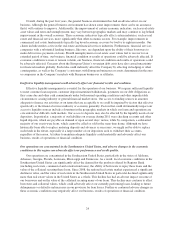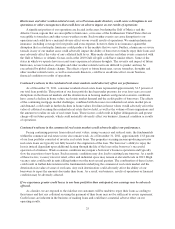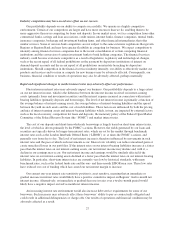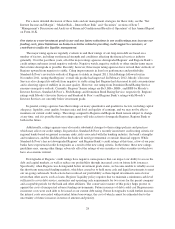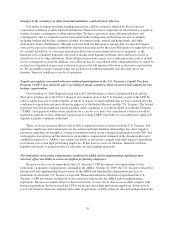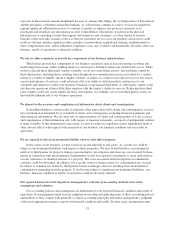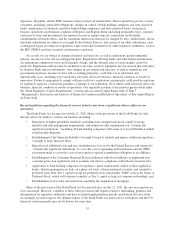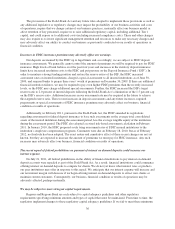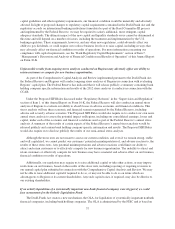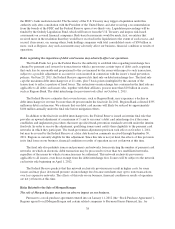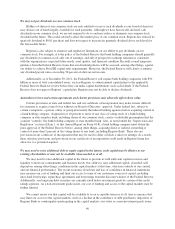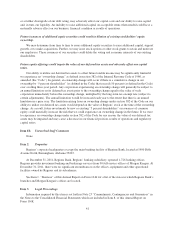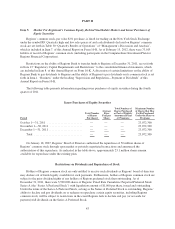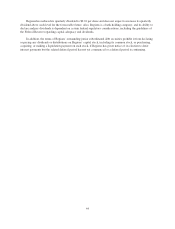Regions Bank 2011 Annual Report Download - page 58
Download and view the complete annual report
Please find page 58 of the 2011 Regions Bank annual report below. You can navigate through the pages in the report by either clicking on the pages listed below, or by using the keyword search tool below to find specific information within the annual report.select the accounting policy or method to apply from two or more alternatives, any of which may be reasonable
under the circumstances, yet may result in us reporting materially different results than would have been reported
under a different alternative.
Certain accounting policies are critical to presenting our reported financial condition and results. They
require management to make difficult, subjective or complex judgments about matters that are uncertain.
Materially different amounts could be reported under different conditions or using different assumptions or
estimates. These critical accounting policies include: the allowance for credit losses; fair value measurements;
intangible assets; mortgage servicing rights; and income taxes. Because of the uncertainty of estimates involved
in these matters, we may be required to do one or more of the following: significantly increase the allowance for
credit losses and/or sustain credit losses that are significantly higher than the reserve provided; recognize
significant impairment on our goodwill, other intangible assets and deferred tax asset balances; or significantly
increase our accrued income taxes.
Changes in our accounting policies or in accounting standards could materially affect how we report our
financial results and condition.
From time to time, the Financial Accounting Standards Board and SEC change the financial accounting and
reporting standards that govern the preparation of our financial statements. These changes can be difficult to
predict and can materially impact how we record and report our financial condition and results of operations. In
some cases, we could be required to apply a new or revised standard retroactively, resulting in us restating prior
period financial statements.
Risks Related to the Legal and Regulatory Framework in which Our Business Operates
We have been the subject of increased litigation which could result in legal liability and damage to our
reputation.
We and certain of our subsidiaries have been named from time to time as defendants in various class actions
and other litigation relating to their business and activities. Past, present and future litigation have included or
could include claims for substantial compensatory or punitive damages or claims for indeterminate amounts of
damages. We and certain of our subsidiaries are also involved from time to time in other reviews, investigations
and proceedings (both formal and informal) by governmental and self-regulatory agencies regarding our and their
business. These matters also could result in adverse judgments, settlements, fines, penalties, injunctions or other
relief.
In addition, in recent years, a number of judicial decisions have upheld the right of borrowers to sue lending
institutions on the basis of various evolving legal theories, collectively termed “lender liability.” Generally,
lender liability is founded on the premise that a lender has either violated a duty, whether implied or contractual,
of good faith and fair dealing owed to the borrower or has assumed a degree of control over the borrower
resulting in the creation of a fiduciary duty owed to the borrower or its other creditors or shareholders.
Substantial legal liability or significant regulatory action against us or our subsidiaries could materially
adversely affect our business, financial condition or results of operations or cause significant harm to our
reputation. Additional information relating to litigation affecting Regions and our subsidiaries is discussed in
Note 23 “Commitments, Contingencies and Guarantees” to the consolidated financial statements of this Annual
Report on Form 10-K.
We are subject to extensive governmental regulation, which could have an adverse impact on our operations.
The banking industry is extensively regulated and supervised under both federal and state law. Regions and
Regions Bank are subject to the regulation and supervision of the Federal Reserve, the FDIC and the
Superintendent of Banking of the State of Alabama. These regulations are intended primarily to protect
34


